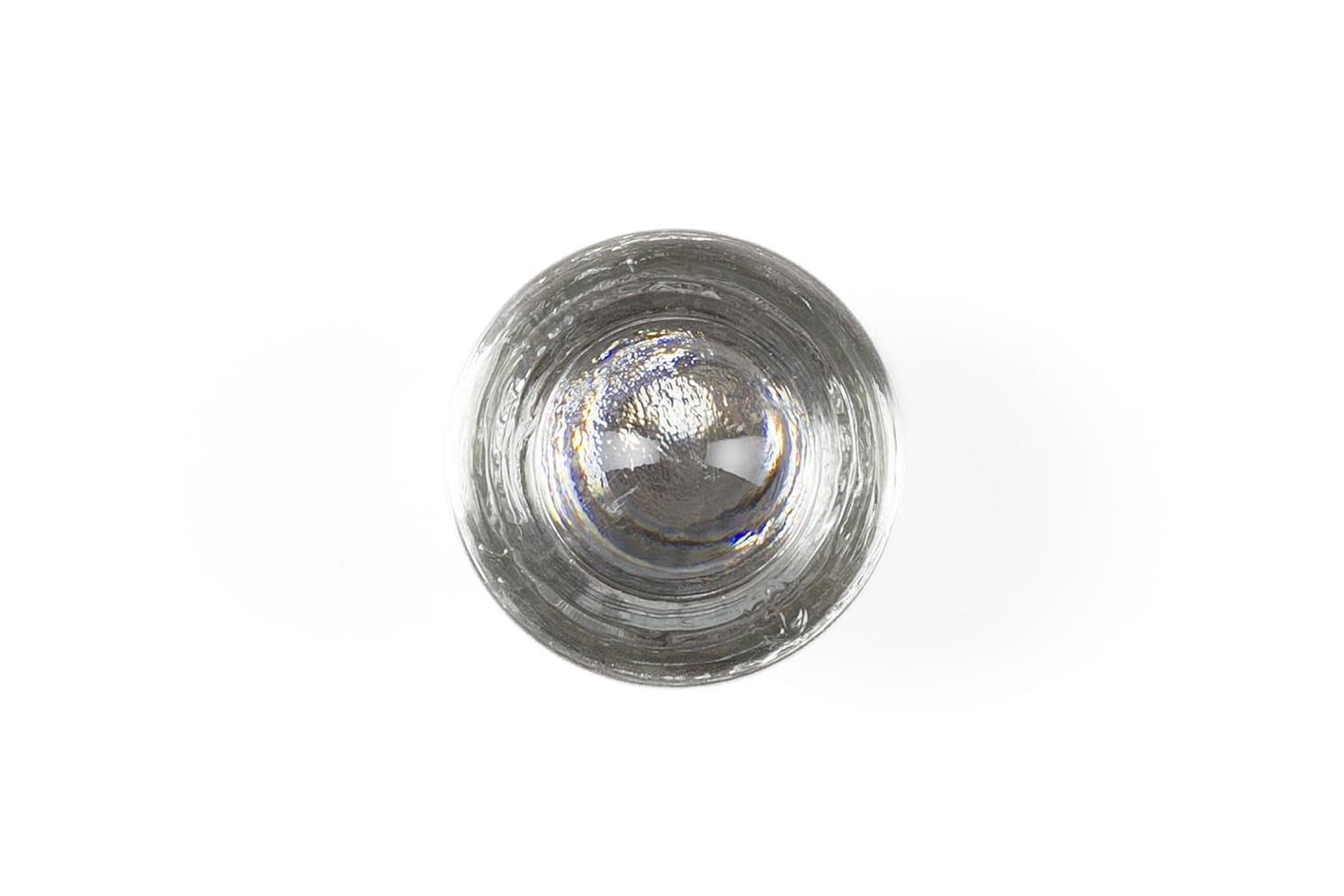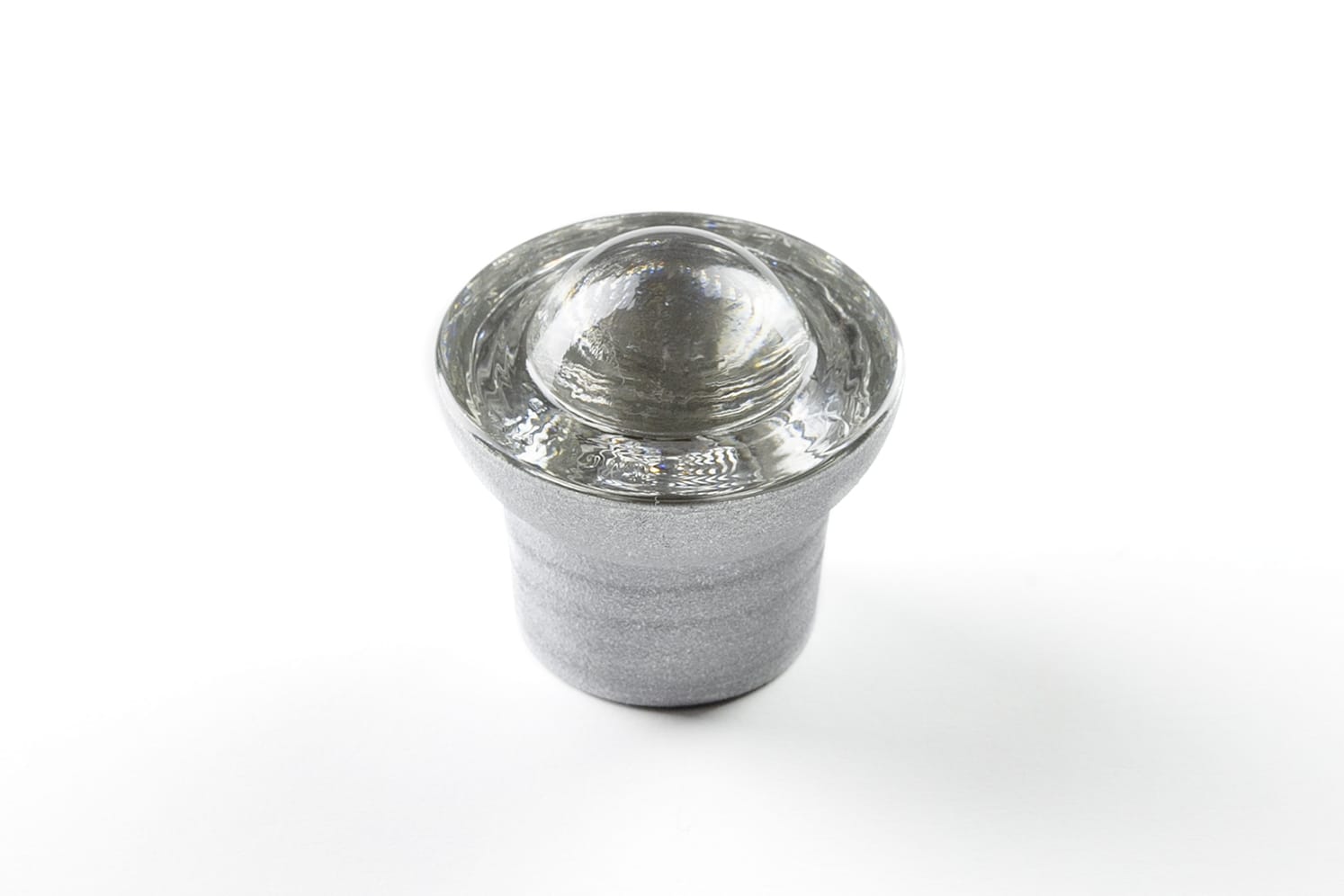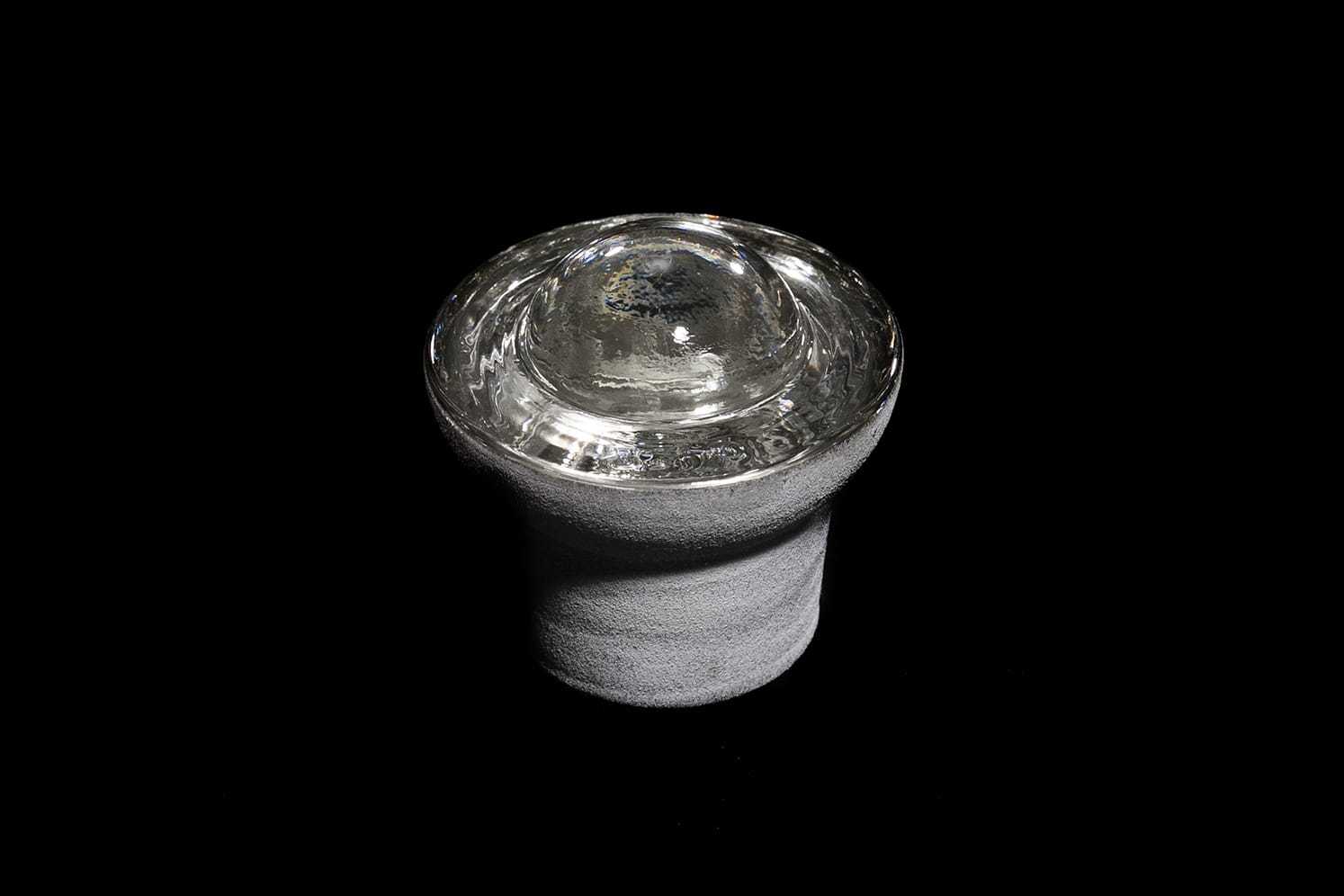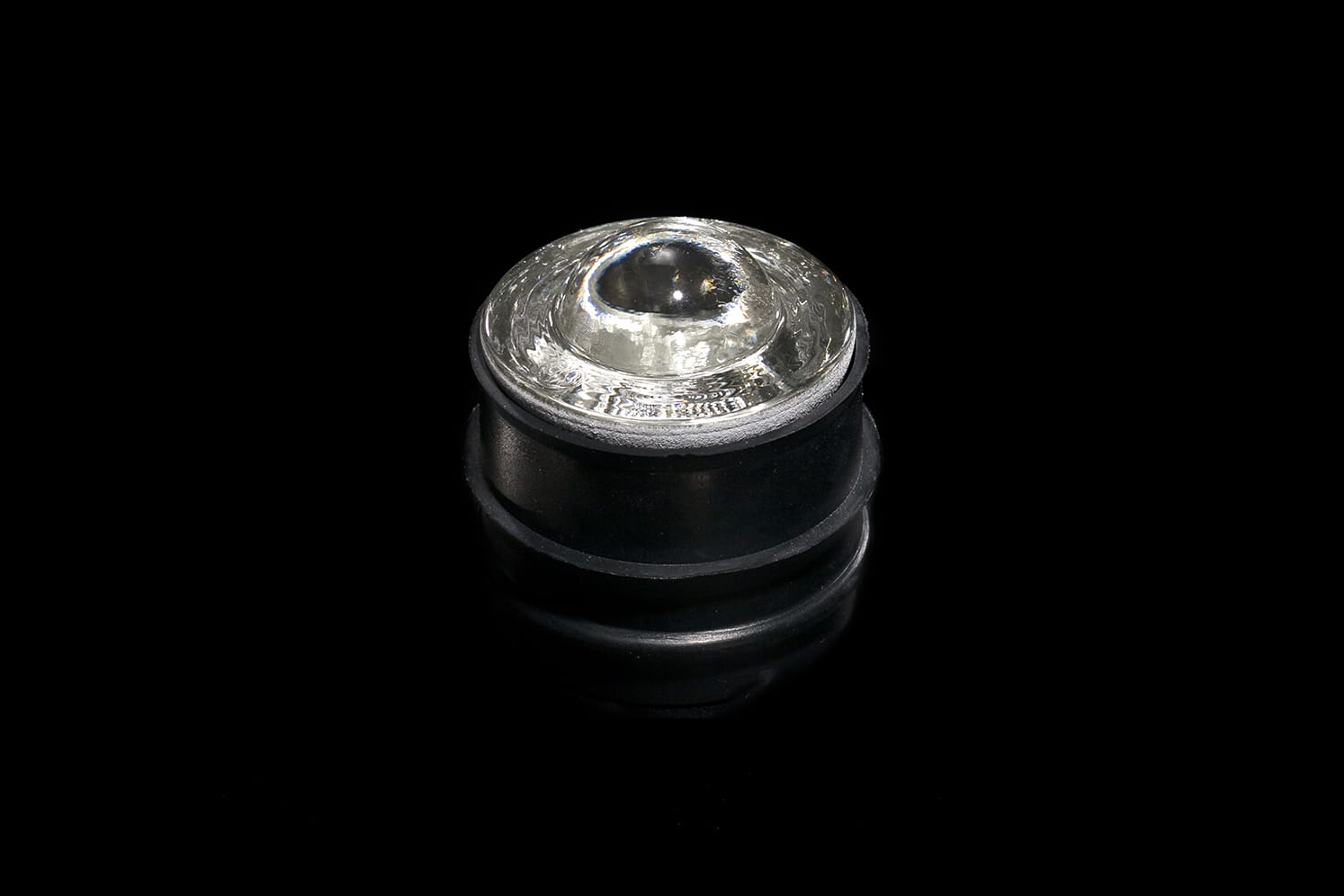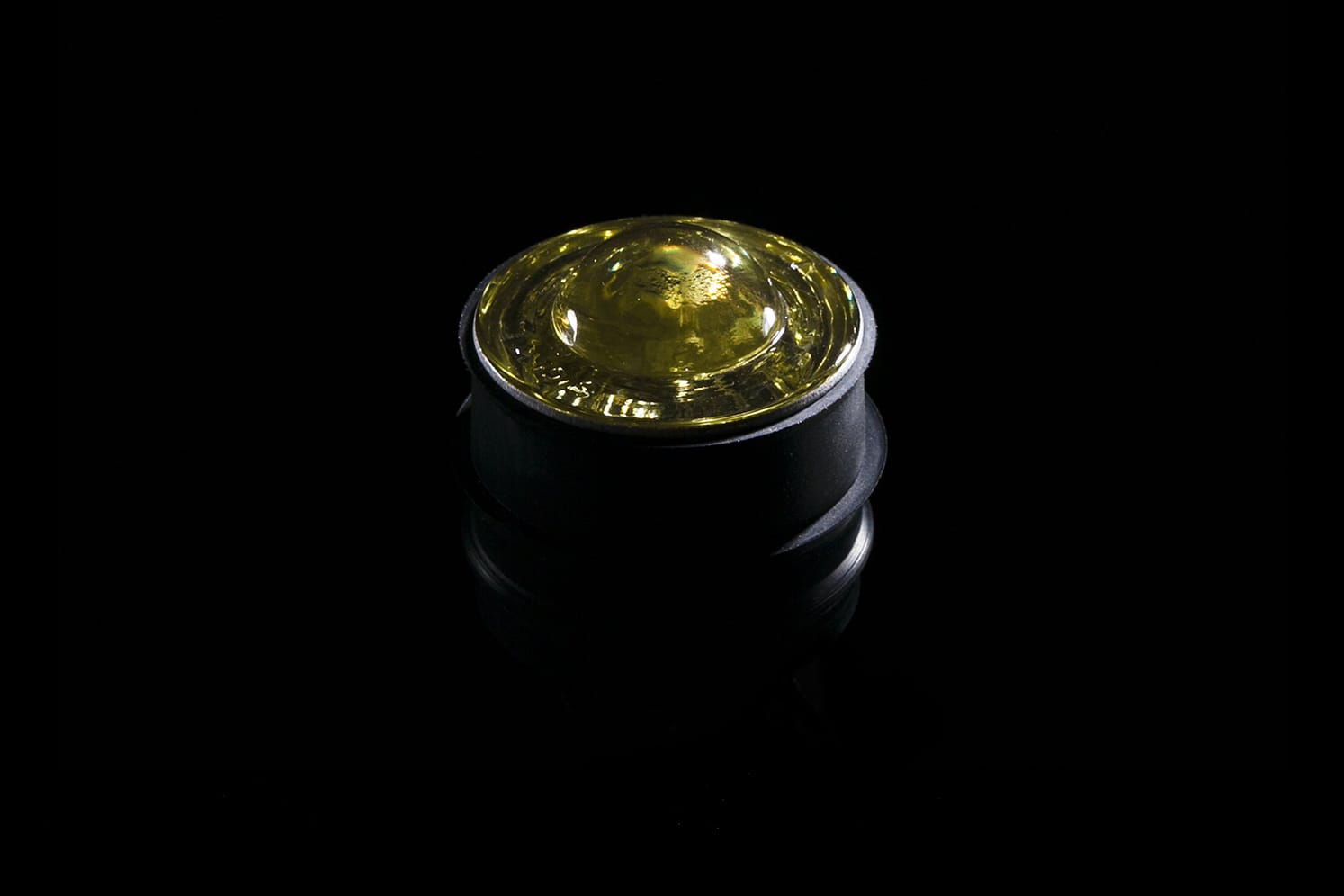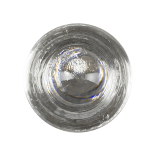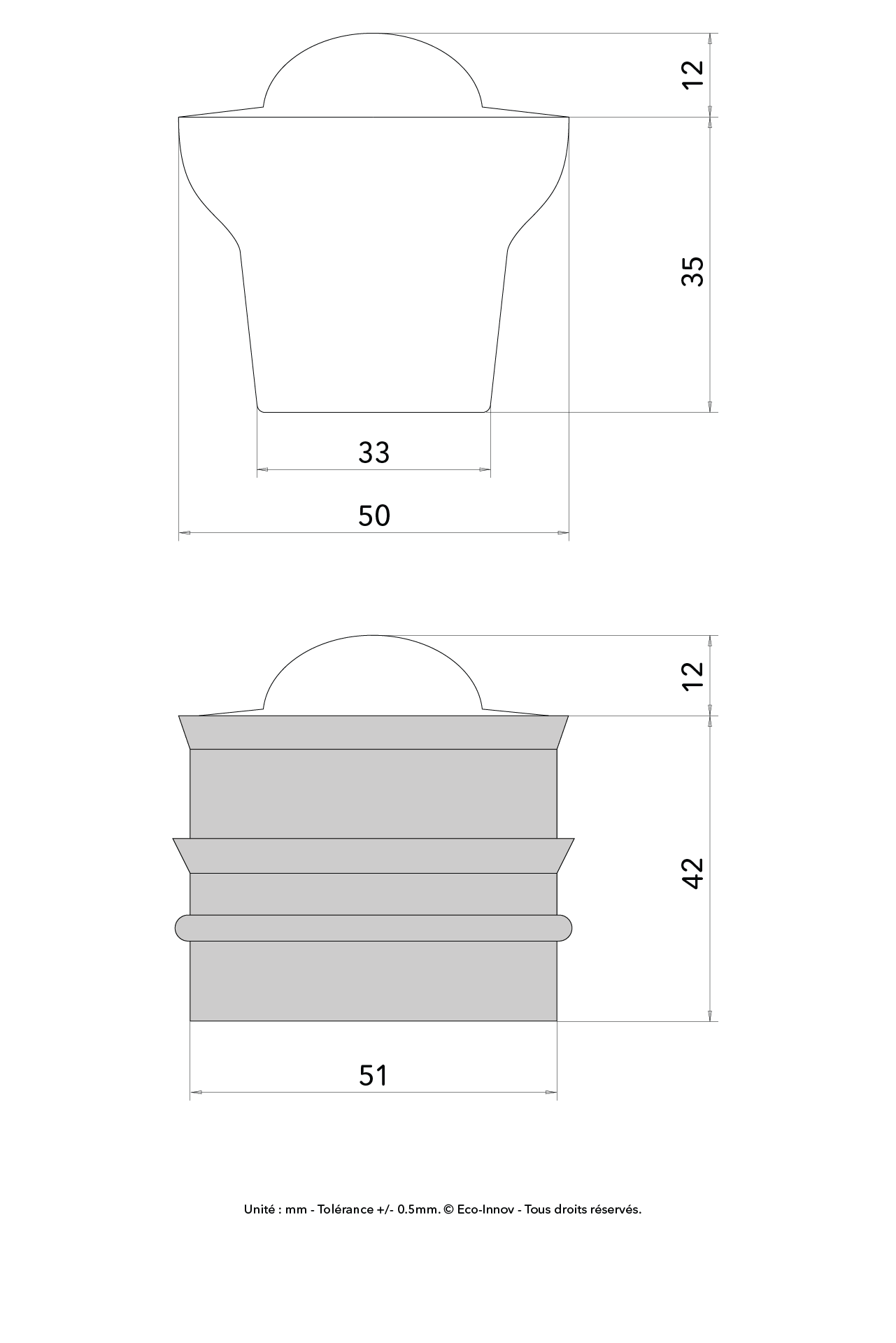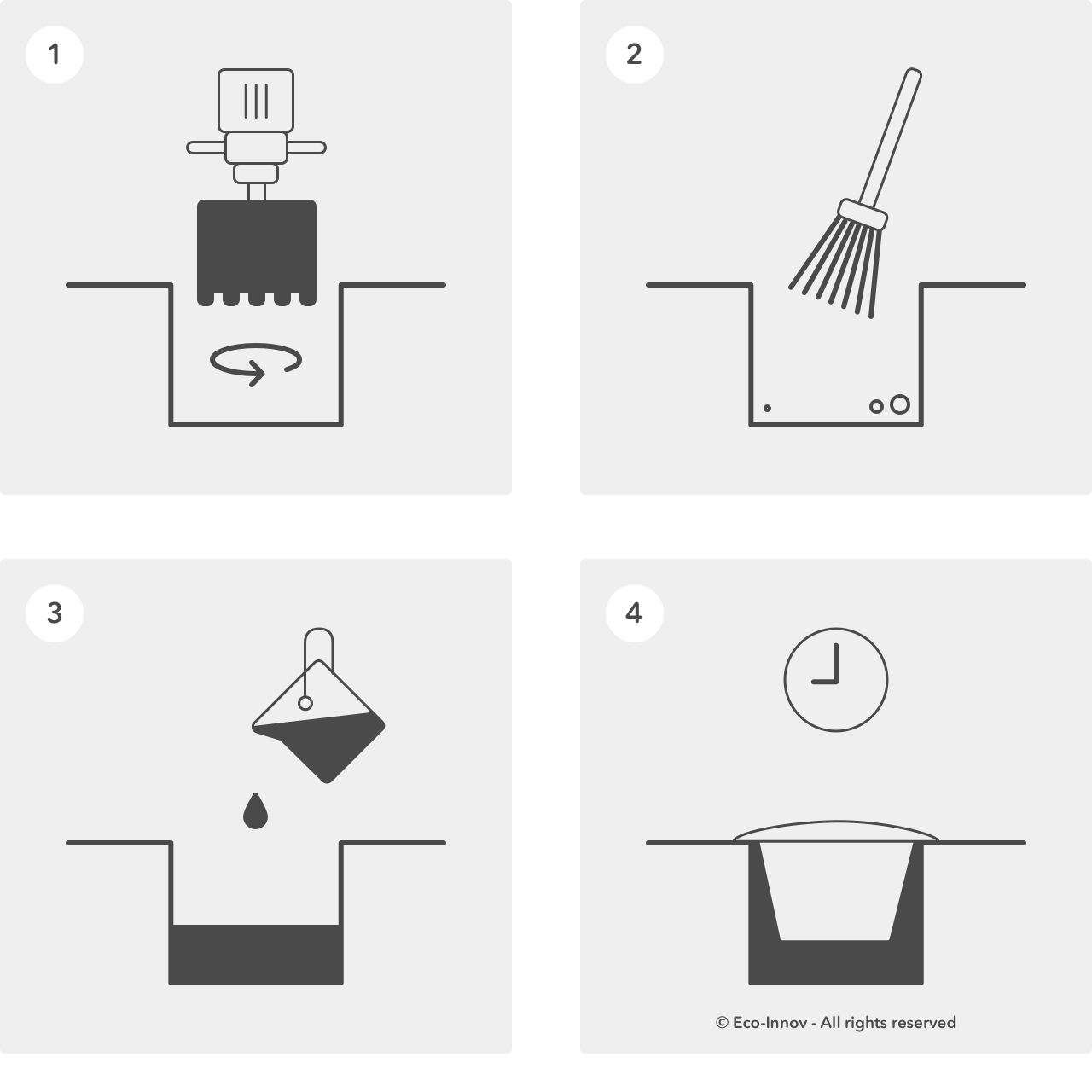OPERATION
Embedded, hardened glass reflecting edge stud.
Retro-reflecting omnidirectional (360°) marking.
ADVANTAGES
Less maintenance required.
No energy consumption.
Quick and cheap to install.
Models with a rubber base can be installed in rainy weather as no epoxy adhesive is needed.
Glass is insensitive to static electricity (no risk of dust accumulating, which is not the case with plastic reflecting studs).
Glass is cleaned easily by rain, so no manual cleaning is required.
More durable than reflecting road studs made of aluminium or plastic.
Excellent mechanical resistance.
TECHNICAL CHARACTERISTICS
Dimensions and weight
Diameter of stud: 50 mm.
Weight: approx. 170 g.
Materials
Hardened glass.
Pressure resistance
More than 18 tonnes.
Available colours
White. Other colours on request.
Applications and conformity
Studs compliant with standard EN-1463-1 / EN-1463-2.
